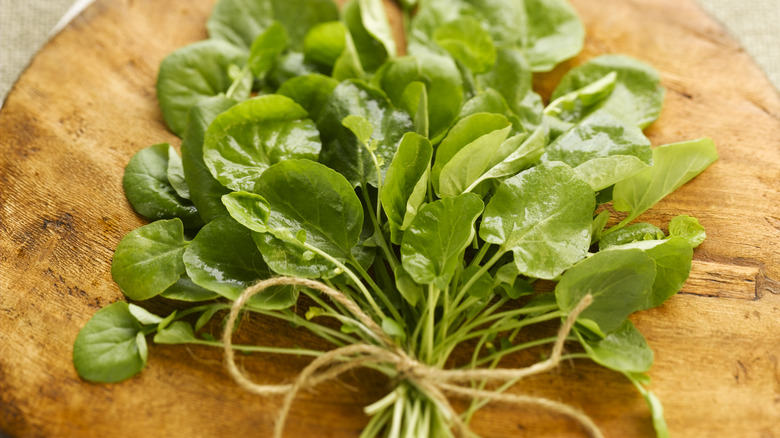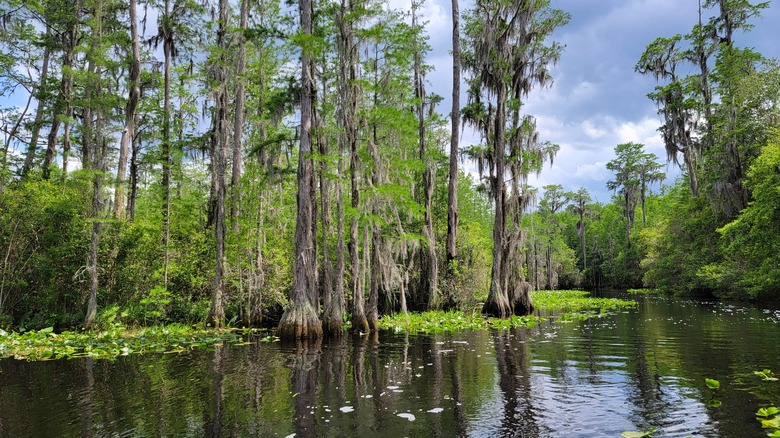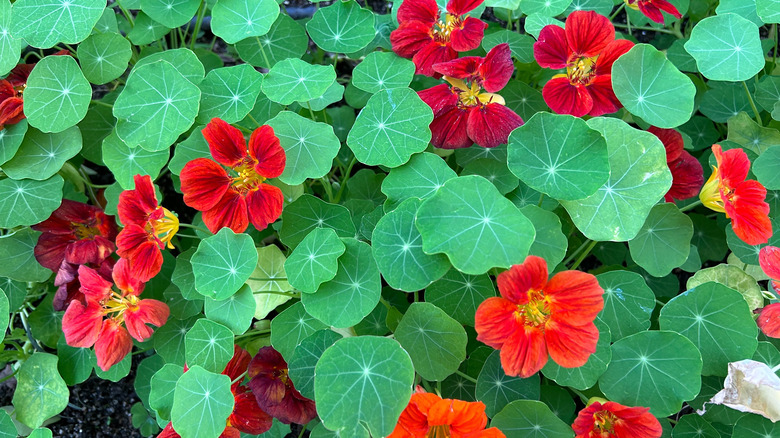Why You May Want To Reconsider Planting Watercress In Your Garden
Sometimes plant names can baffle even the most astute gardener. Nasturtium officianale, also called watercress, is an invasive plant that easily spreads and takes over habitats. With a name so similar to the popular garden flower nasturtium (Tropaeolum majus), it's easy to confuse these two plants when putting in your spring seed orders. While they are both part of the Brassica family, their effects on their environments are very different. They're both edible, packing a nutritional punch and a peppery taste. However, one of the two cousins can wreak havoc on your area's ecosystem.
Nasturtiums are among the best flowers for your garden. On the contrary, watercress (Nasturtium officianale) is listed as an invasive plant in 46 states. Invasive species are ones that have been introduced to an area, either from purposeful planting or from hitching rides on vehicles, wood, or people that travel around the country and the world. Invasive species can out-compete and outgrow native plants, sometimes edging out plant species that have made those areas their home for eons. With all the evidence available, it's a smart idea to add watercress to your list of invasive plants you should never grow.
Why avoid planting watercress?
The harm caused by invasive plants ranges from relatively benign garden overgrowth to widespread threats to native plant species. Watercress is extremely prolific, spreading by both seeds and stem fragments. This species likes cold, clear water but can also be found in ditches, marshes, and along pond edges. With so many chances for spreading and such a wide variety of welcoming habitats, it's best to shelve your plans for planting watercress.
You can still enjoy watercress with a side of adventure by foraging the plants in the wild. Nasturtium officianale is common enough to be found in local parks and other natural spaces. It's a popular treat for fans of sourcing wild foods since it's not too difficult to identify. Yet, before eating any foods grown in the wild, make sure the plant is what you hope it is before eating! Consult a trusted resource like the University of Missouri Library's Plant Identification and Foraging Guide. Also make sure that gathering food is permitted, since foraging in wilderness areas and some parks is restricted unless you're in a survival situation. The U.S. Forest Service warns that wild watercress may carry parasites like Giardia, but once you wash it thoroughly with clean water, you greatly reduce the risk of getting sick.
What to plant instead
Toss out your plans to add Nasturtium officianale to your garden, and plant some nasturtium (Tropaeolum majus) seeds instead. Poor soil quality is no problem when growing this beautiful plant, and they are relatively drought-tolerant. Plus, they are great companion plants to grow with veggies like cabbages. The smell of the flowers masks the scents of your crops from hungry aphids, potato bugs, and a handful of other scourges.
Vibrant nasturtium flowers are an irresistible lure for pollinating insects and hummingbirds, as well. Among the more than 80 types of nasturtium, their blooms are most often orange but can also be yellow, red, or cream. Bright red, yellow, and orange flowers are magnets for hummingbirds and insect pollinators that need all the support they can get. According to the Environmental Protection Agency, pollinator insect populations are facing threats, and this in turn jeopardizes our food security. Including flowers like nasturtiums in your garden will draw in beneficial insects that can help your garden thrive.



